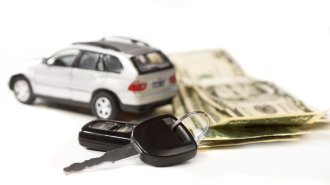
With a recent quarter-percent rate hike from the Federal Reserve, and more hikes expected later this year, borrowing money for your next new car will probably cost a bit more than it has for the last decade. We took a quick look at the best rates currently on offer from a few major banks and found APRs like 3.1% (Wells Fargo), 2.64% (Bank of America), and 2.88% (Chase). Several credit unions continue to advertise rates under 2%.
Not everyone will qualify for rates like these. They're for borrowers with strong credit who are buying a new car from a dealership. But they provide a good rule of thumb for an apples-to-apples comparison with low-APR promotions from manufacturers, which may become an even better deal as non-subsidized APRs inch upward, and often offer much longer repayment terms.
If you want a Chrysler 300, for instance, you can buy the sedan at 0% for up to 48 months (2016) or 72 months (2015) and receive bonus cash of $1,000 for doing so. Even the popular 2016 Toyota Corolla offers 0% financing for up to 60 months. It's the free use of an automaker's money for four, five or six years, and a spectacular deal especially in an environment of rising interest rates.
Other manufacturers offer finance rates that may or may not be competitive with the rates you could get from a bank or credit union. A loan from Volkswagen for a Golf hatchback comes with an APR of 1.9% in January. Lexus doesn't have a single finance offer under 2.9% this month. And the typical loan from Mercedes-Benz currently stands at 2.99% for a relatively short 36-month term.
Our advice in an environment of rising interest rates is simple. When you're starting to shop for a car, sign up monthly Pricing Insights from CarsDirect, with which you can track APRs offered by manufacturers for models that interest you. You might learn, for instance, that Lexus tends to alternate between rates of 0.9%, 1.9% and 2.9% from month to month.
And even if you're planning to take a 0% rate that no one can beat, always get pre-approved for a loan from your bank or credit union when you're ready to buy. That way, even if you're not offered the manufacturer's best advertised rate, you'll have a loan with an APR the dealer can try to beat. It puts you in the strongest position to pay as little as you must even if the Federal Reserve is making that a little more difficult.